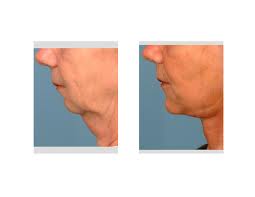Facelift surgery has undergone many evolutions in technique over the past thirty years. Most of these innovations have been largely based on anatomic revelations and efforts to maximize the degree of improvement and the longevity of the procedure. This has led to a wide variety of technique proponents and even marketing names to differentiate providers or to claim superiority of differing methods.
The reality is that a facelift is a managerie of different maneuvers with multiple moving parts. There is simply no one best way or technique to do any facelift. The plastic surgeon has to draw upon a wide variety of available techniques that will improve the patient and to do so in a satisfying way. Patients are generally interested in good improvement of primarily their neck and jawline with a low risk of complications and as quick a recovery as possible.
But amidst the sometimes bewildering field of facelift surgery lie some basic concepts. Even though facelift patients range in age from 35 to 90 years of age with significantly different face and neck anatomy, there remain some basic truisms that experience has shown.
The outcomes from a facelift are different at various ages. The younger a patient is (age 45 for example) the better the result usually is. While there is less of a problem and requires less surgery when one is younger, the results will look more natural and the patient will look better even ten years later. This is because it is as much preventative of aging as the aging that it treats. When the patient is older (age 65 for example), the changes are more dramatic but can often look less natural. This partially explains the popularity in the rise of more limited facelift techniques in younger patients today.


The distribution of fat in the neck and how is managed will influence the final contour of the neck. Many patients present with fuller fatter necks for facelifts. Some may only need liposuction done above the platysmal muscle while others will need subplatysmal fat excision as well. Thinning out the subcutaneous fat layer by aggressive liposuction can easily elad to neck irregularities. Subplatysmal fat excision has a major effect on creating a better cervicomental angle but over resection can create a postoperative submental hollowing effect. The fat that is left behind is actually more important than what is removed.
While many people think that a facelift tightens up muscle, that is only true in the neck. The platysma muscle in the neck is often separated and its tightening helps the cervicomental angle and eliminating banding. In older patients, the platysma muscle must be tightened with or without midline fat removal in each and every case. Younger patients often do not need such muscle management. At the side of the face, it is the SMAS tissue that is manipulated not muscle. Almost every patient needs SMAS manipulation. Whether it is simple plication with sutures in thin patients or SMAS undermining and resuspension in patients with a thicker and more defined SMAS tissue layer, the results along the jawline and neck will be better.
Dr. Barry Eppley
Indianapolis, Indiana


